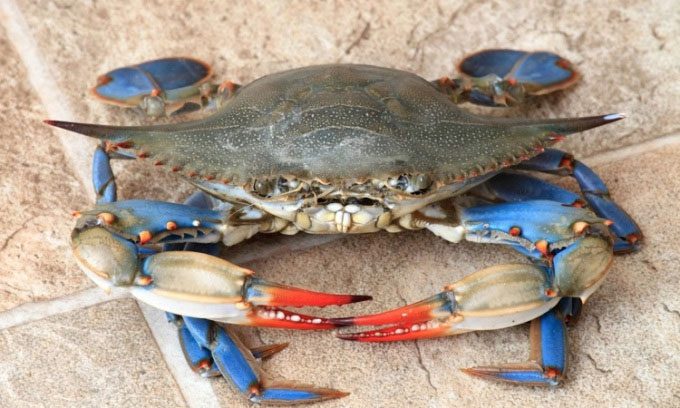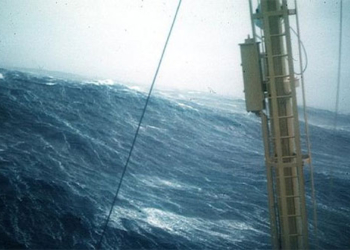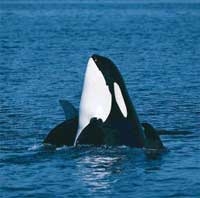The Atlantic blue crab, a voracious invader, threatens Italy’s fishing industry, prompting the government to allocate $3.2 million from an emergency fund to find ways to combat it and encourage its use as food.
Atlantic Blue Crab (Callinectes sapidus) has invaded much of the Mediterranean, from Spain and southern France to Tunisia, and has begun appearing in Italian waters, where it has earned the nickname “ocean killer.” Originally from the coastal bays and estuaries of the North Atlantic in the United States, the blue crab accidentally arrived in the Mediterranean via ballast water from ships.

Atlantic Blue Crab has invaded much of the Mediterranean. (Photo: Alamy).
The Italian government announced the allocation of $3.2 million from its emergency fund to address the rapid spread of the blue crab, Telegraph reported on August 13. They primarily feed on mussels and clams, which are popular dishes among Italians during the summer. The blue crab threatens the livelihoods of local fishermen. Coldiretti, the association of agricultural producers in Italy, warns that 3,000 fishing businesses are at risk from this invasive species. The blue crab also preys on juvenile fish and consumes fish eggs, according to Tonino Giardini, a representative of the fishermen’s association Impresa Pesca.
The funding will be used to support fishermen and encourage scientific research. Researchers still do not know much about the blue crab, including its living habits, reproduction, and the factors influencing its spread. “Increasing our understanding could help us find effective solutions to manage the blue crab. Just in the past few months, it has become a problem in Italy. We need to know what has led to the recent explosion in their numbers,” Giardini stated.
One hypothesis suggests that heavy rainfall and flooding in several areas of northern Italy during the spring have mixed freshwater with seawater, creating brackish conditions that favor the blue crab’s growth. Another theory posits that their spread may be linked to climate change. According to Pier Luigi Piro, president of the fishermen’s cooperative in the coastal town of Orbetello in Tuscany, the number of blue crabs has increased to the point where fish populations could decline significantly.
Environmental experts assert that eradicating the Atlantic blue crab in Italian waters or anywhere else in the Mediterranean is impossible. Instead of viewing them as a pest, they suggest considering them a valuable food resource due to their delicious meat. Italian chefs are exploring creative menu options such as spaghetti with blue crab and crab stew, hoping to persuade customers to choose these dishes. In some areas of the country, blue crabs are being sold for $11 per kilogram.
Francesco Lollobrigida, Italy’s Minister of Agriculture and Fisheries, shared that the goal is to “turn the crisis into an opportunity.” The blue crab is a massive resource. Crab meat is high in vitamin B12, which is very beneficial for humans. Lollobrigida stated.
Italy may follow the lead of other Mediterranean countries that have recognized the commercial value of the blue crab. In the Cyclades Islands of Greece, authorities have erected signs at ports informing fishermen that Atlantic blue crabs are edible, alongside other invasive species such as lionfish, pufferfish, and squid. In Tunisia, the blue crab has become a significant catch that provides income for fishermen.





















































